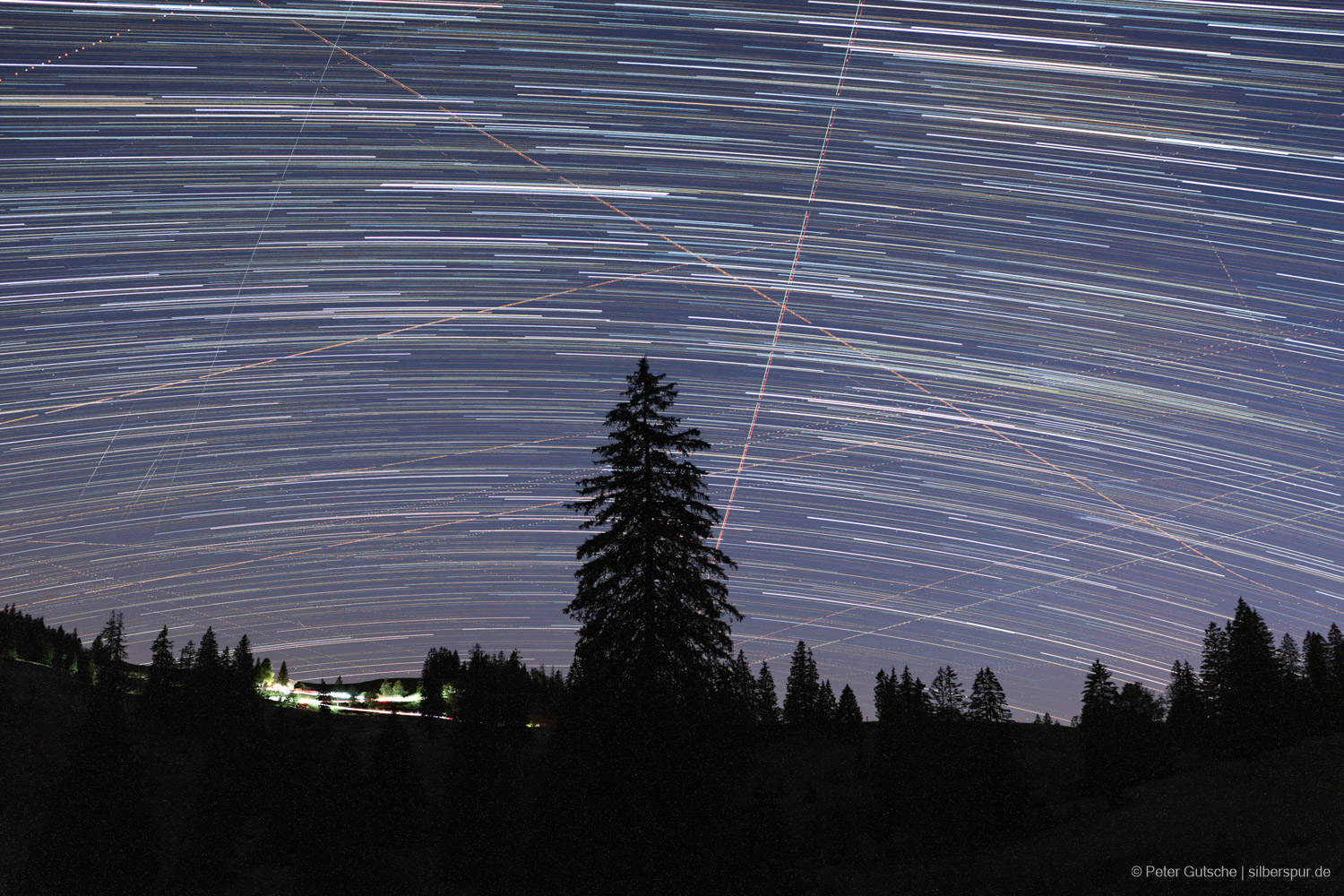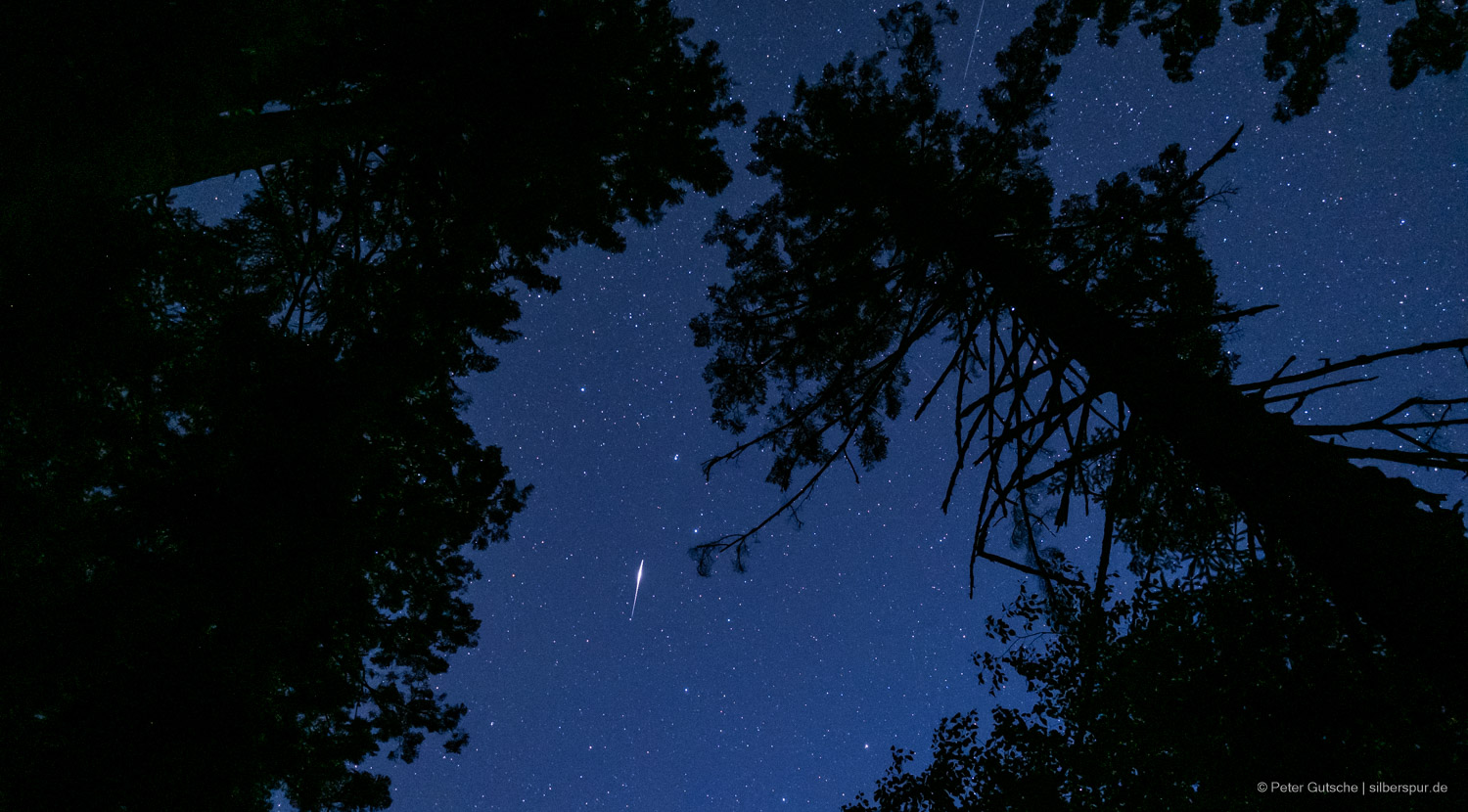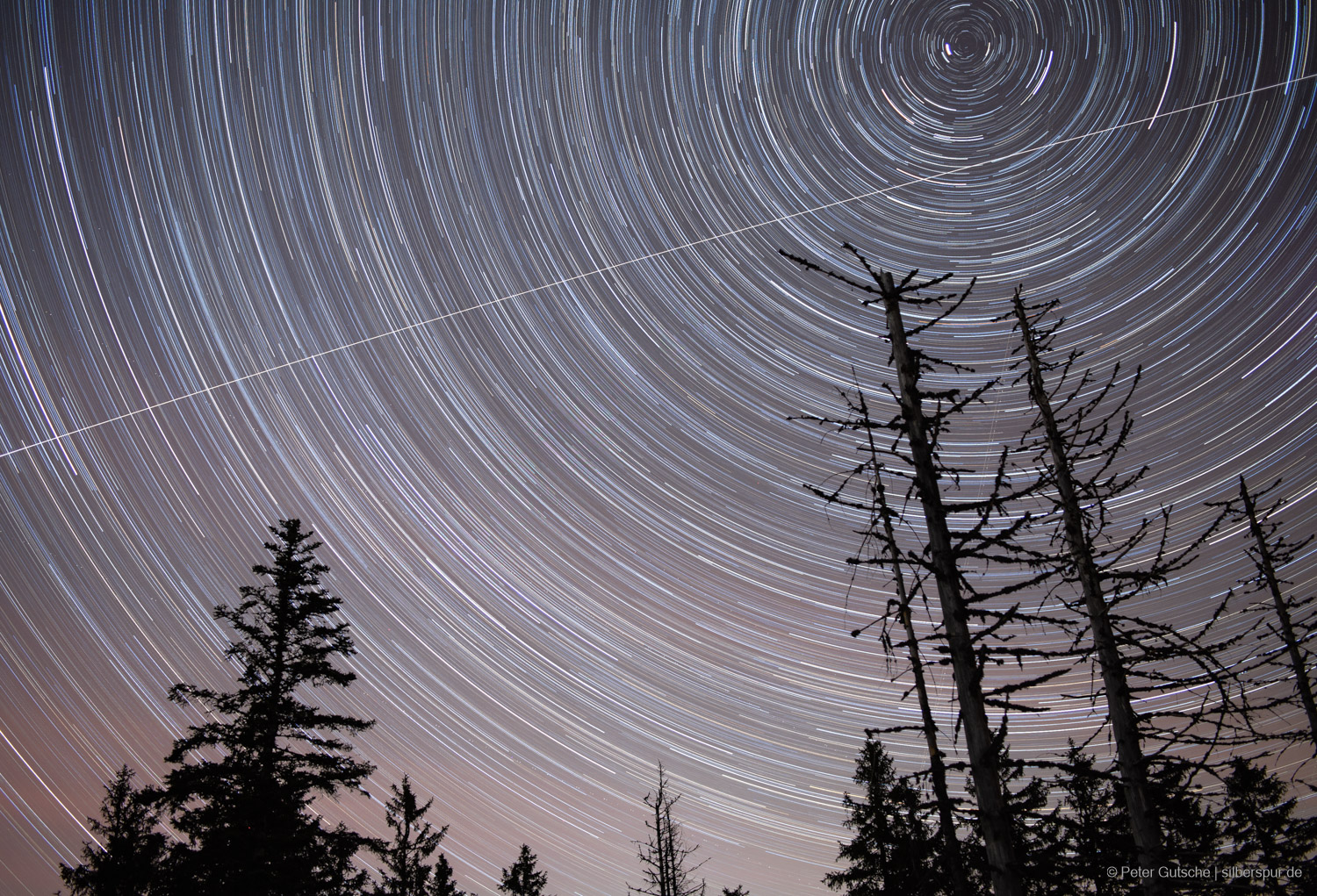The Night Sky as a Common Good - why It won't be dark at night anymore (soon) - 3
A (shorter) German Version of this blog series can be found on the German science blog „Natur des Glaubens”: Der Nachthimmel als Gemeingut.
„Before we invented civilization our ancestors lived mainly in the open out under the sky. Before we devised artificial lights and atmospheric pollution and modern forms of nocturnal entertainment we watched the stars. There were practical calendar reasons of course but there was more to it than that. Even today the most jaded city dweller can be unexpectedly moved upon encountering a clear night sky studded with thousands of twinkling stars. When it happens to me after all these years it still takes my breath away. In every culture, the sky and the religious impulse are intertwined. I lie back in an open field and the sky surrounds me. I’m overpowered by its scale. It’s so vast and so far away that my own insignificance becomes palpable. But I don’t feel rejected by the sky. I’m a part of it – tiny, to be sure, but everything is tiny compared to that overwhelming immensity. And when I concentrate on the stars, the planets, and their motions, I have an irresistible sense of machinery, clockwork, elegant precision working on a scale that, however lofty our aspirations, dwarfs and humbles us.” (Learn more)
The experience of a starry sky is one that humans have shared for millennia (Learn more). What impact would it have if the appearance of the naturally dark night sky – with its seemingly countless stars visible to the naked eye and the bright band of the Milky Way – were to be impaired? What happens to us humans if this experience is irretrievably lost for a large part of the Earth's inhabitants? What then happens to parts of the animal and plant world?
Light pollution caused by airplanes and satellites
Airplanes create light trails in the sky with their position lights. Satellites shine when they are at high altitudes, still illuminated by the sun, reflecting light onto the already dark Earth's surface. Therefore, the hours before sunrise and after sunset are most affected by this latter effect. In long-exposure photographs of the night sky, airplanes typically appear as dotted lines stretching across the entire sky to the horizon. Satellites, on the other hand, leave continuous lines that usually disappear at a certain point in the sky when the satellite enters the Earth's shadow. The artificial light from airplanes and satellites also affects the natural night sky even in places far from terrestrial artificial light sources.
I took the following star trail photo in the Southern Black Forest, Germany, near the Herzogenhorn.

The southern Black Forest is particularly affected by air traffic. This is immediately apparent in the star trail photograph. Looking at https://www.flightradar24.com/48.55,6.55/7, you can find out that there’s a high air traffic volume over the Southern Black Forest.
Satellites or other objects in the orbit can be interesting in night-time photos when they appear as „flares“ – sudden bright spots. This effect occurs when a satellite or another object in space strongly reflects sunlight with a surface. As the orientation of this surface changes relative to a fixed observation point on Earth during its orbit, the beam of reflected sunlight briefly sweeps across certain observation locations. Here‘s an example of this phenomenon.

The following star trail photo shows the northern circumpolar stars.

The photo was taken in the Bannwald near Ruhestein in the northern Black Forest. But what is flying through the image? Right, you guessed it, it's the International Space Station (ISS) (Learn more).
Photos like these can have their own unique charm. However, the rapidly increasing number of satellites could have long-term undesirable effects, primarily on ground-based astronomical observations. As the preceding photos suggest, satellites can disrupt astronomical observations by leaving light trails on images. They can also degrade the quality of observations by making the sky overall brighter due to their increasing numbers.
There are already thousands of satellites in low Earth orbit. SpaceX's Starlink satellites currently dominate the scene (Learn more), and SpaceX plans to deploy a four-digit number of satellites into orbit in the next few years (Learn more).
Scientists have simulated how the night sky might change with an estimated increase in satellite density. They modeled the brightness and distribution in the sky for a potential future with 65,000 satellites. This number was estimated based on currently available information about satellite operators (with information on orbits submitted by companies like Starlink, OneWeb, Kuiper/ Amazon, and StarNet/GW). (Learn more)
Firstly, this study provides an estimate of the number of visible satellites for different latitudes and seasons. Secondly, by considering the brightness influenced by the position in space and the angle of incident sunlight, it estimates how the apparent brightness of the sky will be affected by satellites. The impact on ground-based astronomical observation is discussed, and the authors suggest that the overall brightness of the night sky will increase. A simple calculation results in a value of 4%.
„The first feature that is immediately obvious is that latitudes near 40°N and S have the most sunlit satellites (…) But due to Earth’s shadow, there is a period of few-to-no sunlit satellites for ∼5–6 hr around midnight during the winter at these latitudes. However, during summer, there are more than a thousand sunlit satellites above the horizon all night long.”
This article in The Conversation presents a study that found that, „by 2030, reflected light from objects in low-Earth orbit will likely increase the diffuse background brightness for this survey by at least 7.5% compared to an unpolluted sky".
According to another study(Learn more), the brightness of the entire sky due to „space debris“ – fragments created, among other things, by the collision of satellites – has already increased by 10% above pre-industrial levels:
„According to our preliminary estimations, this newly recognized skyglow component could have reached already a zenith visual luminance of about 20 μcd m−2, which corresponds to 10 per cent of the luminance of a typical natural night sky, exceeding in that way the IAU’s limiting light pollution ‘red line’ for astronomical observatory sites. Future satellite mega-constellations are expected to increase significantly this light pollution source.”
Another problem is satellites that are particularly bright. The „BlueWalker 3“ satellite, a commercial communications satellite from the US company AST SpaceMobile, is one of the largest satellites ever launched into space and thus one of the brightest objects in the night sky. Depending on the orientation of the antenna relative to the observer, the satellite can reach a maximum apparent brightness of +0.4 mag (Learn more). The International Astronomical Union (IAU) recommends that satellites in low Earth orbit should not exceed a maximum apparent brightness of +7 mag (Learn more). Therefore, the maximum apparent brightness of BlueWalker 3 exceeds the IAU's recommended limit by more than 400 times. Note that apparent brightness in astronomy is indicated with the unit mag (for magnitude), which is based on a logarithmic scale. And the brighter an object appears in the sky, the lower its magnitude value.
There are also initiatives that aim to counteract this development. The SATCON2 group (Learn more) brings together various stakeholders to work together on an ethical, legal, and regulatory framework for the protection and sustainability of space. The Canadian astronomer Samantha Lawler, who advocates for the protection of the natural night sky, states (Learn more):
„I often wonder what kind of night sky my children will inherit. Will the stars be hidden behind a rawling grid of bright satellites, or a hazardous snow globe of post-Kessler debris? Or will government regulators set strong safety and light-pollution rules before the night sky is all but lost? The future sky will be chosen in the coming years by the actions of private satellite companies and the government agencies that should be regulating them.“
With a recently established initiative called the „Kessler Rebellion“ (https://www.kesslerrebellion.com/), researchers, including Samantha Lawler, are trying to mobilize the public against the uncontrolled deployment of very bright satellites and to work towards regulating this development.
But why „Kessler“? I will briefly address this in the next section.
Will low earth orbit become unusable soon? The so-called „Kessler Syndrome“
We have seen that the increasing density of satellites in low Earth orbit is becoming a growing problem for researchers, particularly in astronomy. This development could also become a serious problem for space travel in the future.
In the 1970s, astronomer Donald J. Kessler and Burton G. Cour-Palais (Learn more) investigated the effects of an increasing number of satellites in low Earth orbit and the associated likelihood of collisions. To estimate future developments, he applied statistical models that describe the formation of the asteroid belt between Mars and Jupiter to low Earth orbit.
They concluded that satellite collisions would produce numerous fragments that could destroy additional satellites. This could lead to an exponential increase in the number of objects and the formation of a belt of space debris around the Earth. This process is similar to the one that likely formed the asteroid belt but would occur much faster in low Earth orbit due to the smaller spatial dimensions.
In detail, they found that the collision-induced destruction of satellites could soon lead to a debris stream that exceeds the natural meteorite flow in certain regions (without a specific time estimate). In the long term, the amount of debris would increase exponentially.
This phenomenon became known as the „Kessler Syndrome“. However, this term was never introduced into the scientific discussion by Donald J. Kessler himself (Learn more).
The crucial question now is: could the currently expected increase in the number of satellites in low Earth orbit soon lead to the formation of a debris belt that makes the use of low Earth orbit practically impossible?
A recent study cautiously concludes (Learn more):
„In line with previous studies, our model finds that debris congestion may be reached in less than 200 years, though a holistic management strategy combining removal and mitigation actions can avoid such outcomes while continuing space activities.”
In a 2023 paper (Learn more), the so-called KESSYM model (KESsler Syndrome Model) is presented and thoroughly explained. KESSYM uses data on the population and flux of space debris, provided by existing works from ESA and NASA, as input. For calculating future developments, KESSYM employs statistical methods to simulate the collision probability between three types of objects in orbit: satellites, satellite fragments (debris), and micro-fragments (less than 1kg). These objects are treated as particles of an ideal gas, allowing the collision probabilities to be simplified and calculated based on the „gas density“.
„Orbital mechanics and collisions are modeled on a probabilistic basis based on a ‘density’ of objects in the LEO, rather than by tracking exact flight paths.“
The scientist comes to the conclusion tat the Kessler Syndrome „… is almost an inevitability within 200-250 years of today’s date, but can be delayed or avoided altogether if action is taken.“
From a thermodynamic point of view, the Kessler Syndrome is associated with an increase of entropy in the orbit:
Entropy, according to Ludwig Boltzmann, is defined by the number of possible microstates of a system. Considering a cup of coffee (or more simply, hot water), a microstate is given by the information about the coordinates and velocities (kinetic energies) of each individual water molecule at a specific moment, while the macrostate of the cup is defined by its temperature. From our everyday experience, a cup of coffee will cool down over time if it does not have insulating walls, and the temperature of the coffee and the temperature of the surroundings (typically, molecules in the air) will equalize – and never the reverse. Why is that? The reason is that there are far more ways to distribute the kinetic energy among the individual particles considering both coffee molecules and air molecules in the surroundings than if the energy were concentrated in the cup of coffee. A system with different temperatures (in the coffee cup and surroundings) has fewer possible microstates (arrangements and energy distributions of the molecules) than a system with a uniform temperature distribution. A system tends to a state that is defined by more microstates, i.e., towards a state of higher entropy.
How does this relate to space debris and the Kessler Syndrome? With each collision and the resulting creation of new debris fragments, the number of objects in orbit increases. This leads to a drastic increase in the possible arrangements (microstates) of these objects in space. Consequently, the entropy also increases. Similar to the cup of coffee, the kinetic energy of the original (fewer) objects is distributed among a larger number of smaller objects (initial objects and debris fragments) through collisions. This corresponds to a more uniform energy distribution, which also represents an increase in entropy.
There are now indications of another, potentially more threatening risk from satellite mega-constellations: falling space debris creates nanoparticles of aluminum and aluminum oxide, which, once they have descended into the stratosphere over decades, could damage or even completely deplete the ozone layer. This would be an absurd irony of history, as the ban on fluorocarbons in the 1980s was one of humanity’s few successful global initiatives that stopped an imminent planetary change – namely, the depletion of the ozone layer (Learn more).
Go to part 4 of the blog series
Go to previous part of the blog series